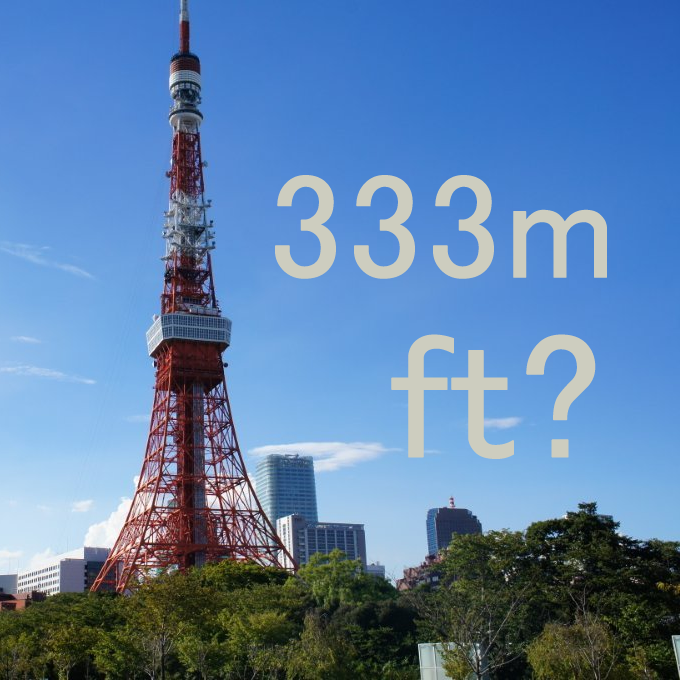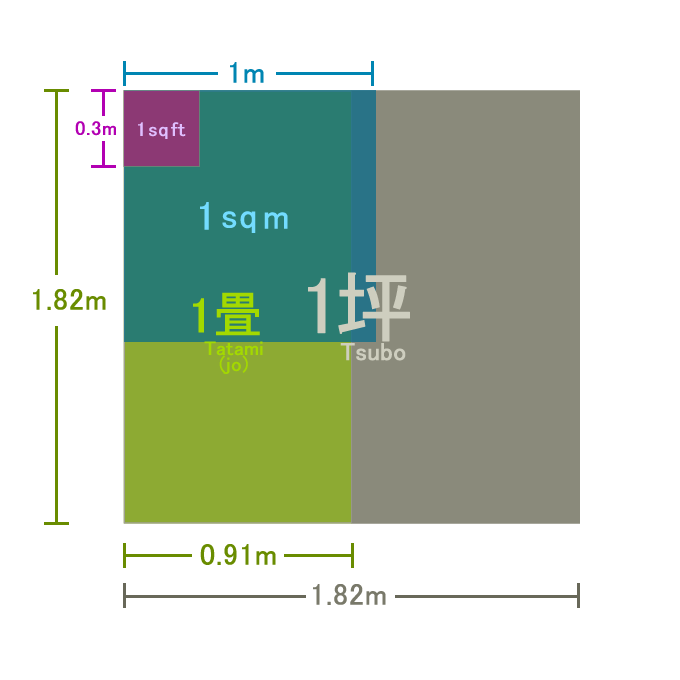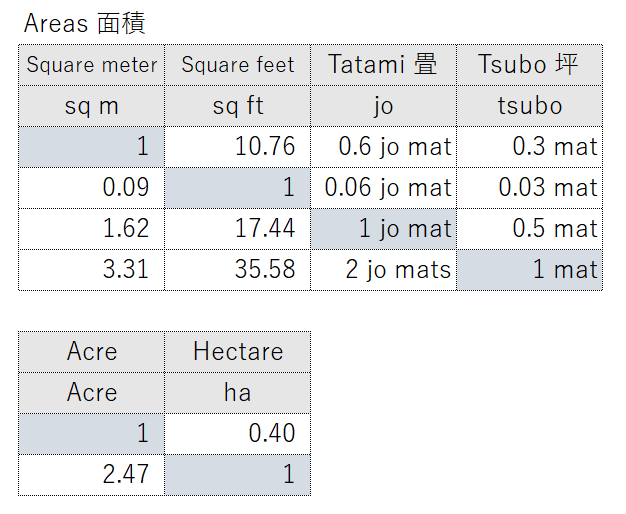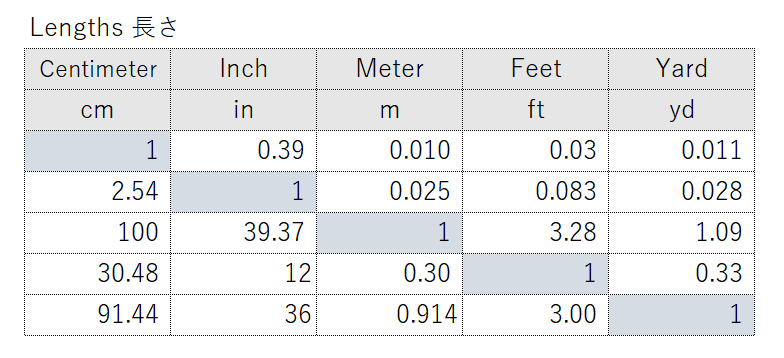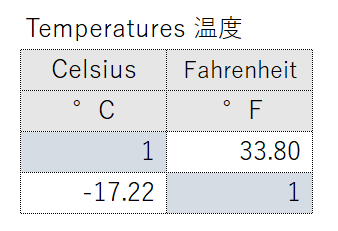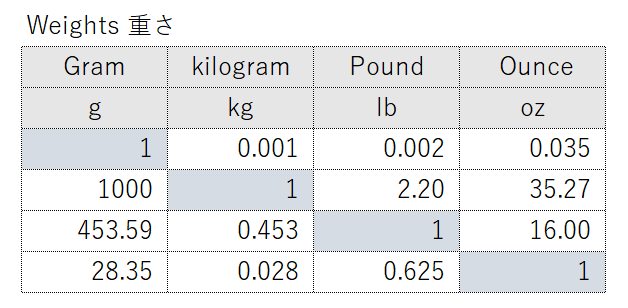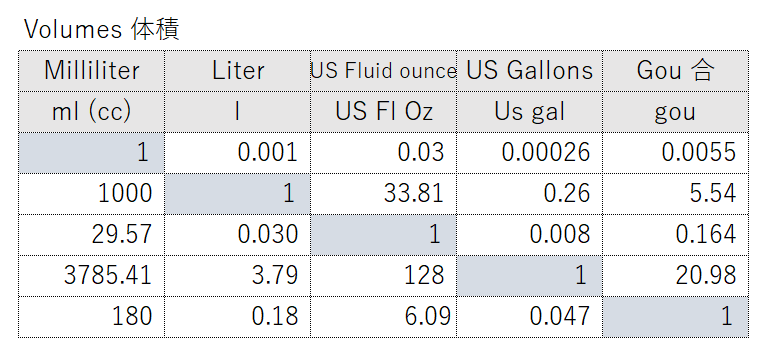Japan uses the metric system, the International System of Units (SI). Newcomers from North American countries, the USA and Canada, may get confused at the different unit systems at first. However, they will soon get used to it through the rule of thumb and find it not much trouble in daily life. Once you get the feeling of size in various situations, life in Japan will be more enjoyable. For example, do you know the height of the Tokyo Tower and Mt. Fuji? The answers: Tokyo Tower is 333 meters or 1093 feet tall, and Mt. Fuji is 3776 meters or 12388 feet high – both of which are very familiar numbers for most Japanese people.
In addition to the metric system, Japan uses its traditional units of measurement. Some of those traditional units are still used quite often in everyday life, so it is worth knowing for convenience.
Here you find the information on the metric system and the units of measurement used in Japan. The values in each table are approximate, rounded off to the third decimal place for use as a reference. The descriptions come with hints that will help you to visualize the measurement in mind.
Area size
In Japan, the size of a house is expressed in square meters. The room size expression is also in square meters, along with the number of tatami mats. For Japanese people, it seems easier to understand the room size by explaining with tatami mats, like “This room is of 6-tatami mats.” Although the size of a tatami mat is slightly different in regions, the basic size is about 1.62 square meters for a single tatami mat. In terms of an area in square meters, this example may help you get the picture of a size; One volleyball court (18m x 9m) is approximately 162 sq m = 1744 sq ft.
Tsubo 坪, another traditional unit of Japan, is also used to express the area of size. One squire size of tsubo is equivalent to 2 tatami mats, approximately 3.3 square meters. Senior people in Japan usually use the tsubo to express the size of an area, which sometimes makes people puzzled, especially guide interpreters on tour. In the situation when an elderly Japanese guide says, like “This farm is 2000 is tsubo size”, the interpreter needs to translate and convert the tsubo to square meters/feet on the spot, where you will see the interpreter in a little panic. As a rule of thumb, a soccer pitch (about 7140 m²) is about 2157 tsubo that will help you understand the size.
To express the large scale of an area, Japanese people also refer to the Tokyo Dome, a baseball stadium located in Bunkyo City, Tokyo. For example, they explain “This forest park is almost as large as 20 stadiums of Tokyo Dome.” The size of the Tokyo Dome is estimated to be 4.7 ha (11.61 ac).
Length
Knowing proper size in cm/inch is essential when buying clothes. For instance, 80cm waist is about 31.5 inches. You may not find the best fit without converting cm to inches and vice versa. Also, keep in mind that Japanese standard clothes’ size groups may include smaller sizes than those in Europe or North American countries. It should be better to check the size chart.
Distance & Speed
Speedometers of automobiles in Japan are displayed in kilometers. Naturally, speed limit signs on roads are indicated in kilometers. Under the speed regulations on highways in Japan, standard passenger cars on sections having no indication of limit signs are to travel within a speed limitation; the maximum speed is 100 km/h (62.14 mph), and the minimum is in principle at 50 km/h (about 31 mph).
Temperature
Japan uses Celsius degrees to express temperatures. For using air-conditioners at home, there are recommended temperature controls for physical condition management, which are 28℃ for cooling in summer and 20℃ for heating in winter. These temperatures are just a reference value that you adjust according to your physical condition.
Weight & Volume
Japanese measuring cups in cooking are commonly in CC, equivalent to milliliter (1cc=1ml). The measuring cups used in Japan are usually 200cc, smaller than the American size of 235cc. When you cook sweets or those involving accurate measurements, make sure to use the size of the cup mentioned in the recipe.
A traditional Japanese unit Gou 合 is also used in cooking to this day. The unit of gou is used in the measurement of rice. 1 gou of rice is 150g, equivalent to 180ml. Japonica rice, the most common type of rice in Japan, is cooked with a 1:1 ratio of water to rice. That means 1 cup of rice is cooked with 1 cup of water, and 3 cups of rice are cooked with 3 cups of water.
The unit of gou is used not only for measuring rice but also soy sauce and Japanese sake. 1 gou of sake is 180ml – an ordinal glass size you may see at an Izakaya bar. As for the sake bottle that looks similar to a wine bottle, one bottle contains 4 gou, worth 720ml of Japanese sake. Cheers!

